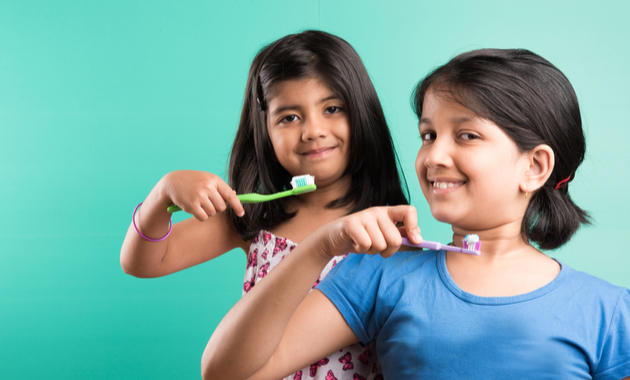
When it comes to your child you want nothing but the best for them. Be it the school you send them or the food they eat. Yet when it comes to dental hygiene, we tend to think that brushing their teeth once a day with our regular toothpaste would be enough to keep their teeth healthy. What we don’t realize is that a child’s teeth are in a developing stage and their needs are different from ours.
The toothpaste that we use typically contain active and inactive ingredients. Active ingredients usually include anti-cariogenic agents (e.g. fluoride) and antimicrobial agents. These ingredients actively help in strengthening the tooth structure and help reduce the formation of plaque. Inactive ingredients include abrasive agents, flavouring agents, thickening agents and sweeteners. So how do these ingredients affect your child’s oral health, Let’s find out.
1. Fluoride content: Toothpaste for adults contain a higher concentration of fluoride than kid’s toothpaste. A child’s first instinct is to swallow the toothpaste when ingested. Higher concentration of fluorides in toothpaste increases the risk of fluorosis of teeth. Fluorosis occurs when fluorides are ingested in larger quantity in the developmental stage of enamel, i.e, while the teeth are still erupting. This can cause cosmetic issues at a later stage of life. Using specialised toothpaste for kids with lower fluoride concentration removes that possibility.
2. Abrasive agents: These agents remove the plaque and surface stains from the tooth surface. They must be abrasive enough to perform this action without damaging the enamel. Some of the adult toothpastes are meant for whitening teeth which should not be given to children as whitening toothpaste may contain highly abrasive agents which can lead to enamel wear in child’s teeth.
3. Artificial Sweeteners: Always choose a toothpaste for your child with sweeteners like xylitol. Xylitol is a plant-derived sugar substitute that has proven anti-cavity effect. It inhibits the growth of cavity-causing bacteria and deposition of plaque on the tooth surface. It’s sweet taste appeals to the child. So next time you shop for your child’s toothpaste, make sure xylitol is one of the ingredients listed.
4. Interesting flavours: Regular toothpaste is generally flavoured with mint. Mint gives a fresh sharp menthol odour and a pungent taste followed by a cooling sensation. This can make your child not so happy about brushing. Inculcate good dental habits by buying toothpaste in their favourite flavours like bubblegum, apple or strawberry which makes them look forward to brushing rather than run away from it.
Apart from ingredients, you should also follow correct brushing practices. It is recommended that children younger than 3 years should use a smear of toothpaste (the size of a grain of rice) for brushing. After that, from 3-6 years, they should use a pea-sized amount of toothpaste. In addition to this, it is also important that young children should be supervised by parents while brushing and taught to spit out, rather than swallow the toothpaste
Whenever you buy toothpaste for your child make sure you take care of these points. Always read the ingredients of the product to ensure that your child gets nothing but the best. You cannot stop your kids from consuming sweets but you can ensure that they brush correctly and with right means for a healthy and happy smile.